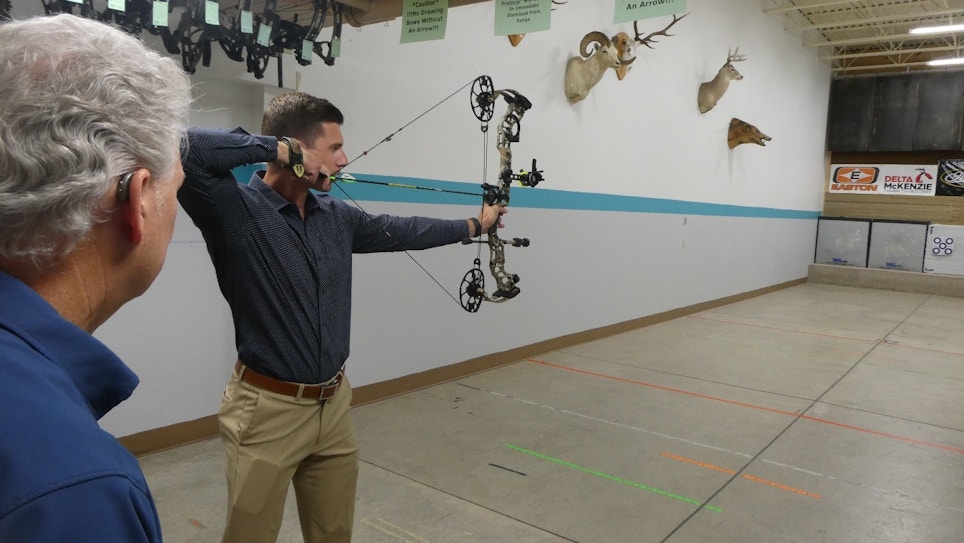Some of the good news for archery pro shops these days? We’ve emerged from the trying times of the pandemic, and all the many retailing challenges it brought. But hold on. Shops still in business know all too well that some very unique challenges still remain. However, much like with many other segments of the business world, retailers that are adapting successfully to the “new normal” are not only surviving, but thriving.
We spoke with several retailers on how they navigated a somewhat difficult 2023, and why 2024 promises to be bigger and better for the archery industry.
Staffing Remains Challenging
Businesses learned quickly that the pandemic would have huge, negative implications for employee staffing, and the archery industry was not immune. From sourcing materials to keeping people in place to build products, to keeping staff in place in pro shops to sell and service those products, all proved challenging. And those challenges continue.
“Well, you simply have to pay people a good wage to stay and work,” said Jeff Byrne (below), owner of Cabin Fever Sporting Goods in Victoria, Minnesota, a full-line sporting goods shop offering fishing, guns and archery. “And to pay people that good wage to stay and work, it means our shop has to generate more revenue. The advantage I have here is, when one segment of the business, say archery, is slow, employees can just move to the other areas, fishing or guns, that are busier. So people are never standing around, there’s always something to do, products to sell. And it’s nice because each of our three core areas generates about 30 percent of sales, so our mix works together very well.”
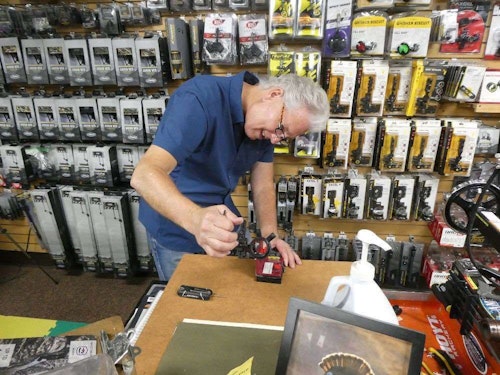
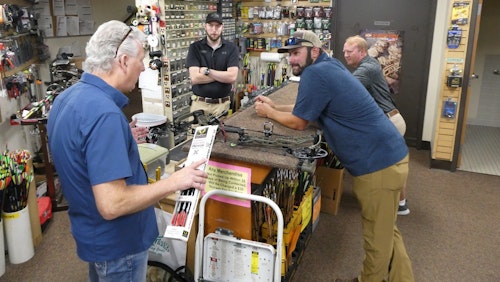
Another shop owner who knows staffing has its challenges is Brad Love, longtime owner/operator of Colorado-based distributor Western Recreation Industries, which recently opened a full-line retail location in its home city of Poncha Springs, a very isolated western community that has capitalized on its prime tourist location. The Western Archery pro shop sees more than its share of vacationers looking to hike, camp, fish and hunt in southwest Colorado. Business has been brisk.
“For your key personnel, you’ve got to be willing to pay more than you pay yourself,” said Love. “Identifying those people, and securing those people, is an investment in your future. It’s your retirement plan.
“However, attracting and hiring the right employees is very difficult for us here, and the reason is twofold. Because we live in a remote place, which is not easy to get to, we don’t have a huge pool to choose from. And, it’s expensive to live here. So paying people what they’re worth is extremely difficult. But people who live here are here for a reason, and it’s quality of life. You’ve got hunting and fishing opportunities out your door. Also, I work with my son, daughter and brother, so we’ve got a lot invested with just our family. That helps.”
Navigating Inventory Issues
In today’s retail climate, Byrne said he’s also got to be extra watchful about inventory levels. Because during the pandemic gear of all types was so hard to come by, when inventory started flowing again the shop ordered heavy. That put Cabin Fever in a pickle in Nov/Dec of 2022, when it didn’t sell nearly as many kids’ bows, or crossbows, as it had projected.
Byrne’s solution for 2023 was to cut back on larger programmed orders made direct to manufacturers, and instead opt for smaller orders through distributors. “Our margins with distributors are less, but now we’re not stuck with a bunch of product we can’t move.”
When asked how he tracks orders and sales, Byrne admitted he does not depend on a sophisticated Point Of Sale system. Instead, Byrne is crunching the numbers and making those calls on his own. It’s extra work, but allows him to personally stay on top of the most-critical aspects of his shop.
“When I reorder, I look at what we’ve done in the past and make an educated guess as to what kind of year it’s going to be,” Byrne explained. “Where you can get screwed with that approach, is missing out on a hot new product that is suddenly super popular, and we can’t get enough. But in those cases, that’s when it’s good to have created good relationships with manufacturer reps and distributors. Because sometimes you’ll be able to get your hands on limited inventory that some shops won’t. So fostering those good relationships can be critical.”
In today’s business climate, Byrne said he has also made the hard decision to not attend the annual ATA Show, which he had historically done with one or two employees, in favor of sticking around the shop to make hay during one his biggest money-making times. For Cabin Fever, it’s been a tough but smart call.
“For us, the ATA Show is just too close to Christmas,” Byrne said. “We’ve got loads of people coming in to set up bows they just got for Christmas, and generally, just coming in and shooting those bows in our lanes. That leads to all kinds of additional sales as well. You’ve got to remember we’re dealing with the snow and cold of Minnesota, so if you want to shoot then, it’s indoors. It’s a big time for us.”
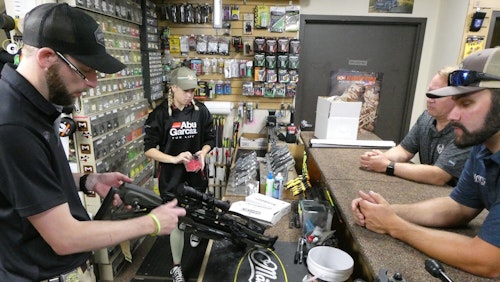
Waiting on 2024?
“I still believe we’re dealing with what I call the ‘Pandemic Hangover’,” Byrne said in July of 2023. “During the pandemic, people were getting money (government checks), they had time on their hands, they were buying. But now, people have mostly gone back to work, and what’s happened with many of them, they’re thinking, Geez, we’ve bought a heck of a lot of stuff these last 2 years. So they were probably not going to buy a new bow (in 2023). But they will listen if you show them a new sight, maybe a premium two-pin mover, that can help them be more accurate and successful. Or maybe a new thumb-trigger release that’s going to help them shoot better. Maybe a new premium quiver. Accessories sales in 2023 were very good.”
Byrne said it’s been mostly firmly established accessories moving in his store, because there hasn’t been a lot of crazy-new innovation as of late. He believes that will change soon. He said, “Most of the manufacturers and reps I’ve talked to, most are so busy trying to get older, established models built and shipped, they’re saying it will be 2024 when we’ll see a lot of brand-new stuff. “So for 2023, what we saw was a slow-down that, truthfully, happens every 10-15 years in the archery industry. I’ve been doing this 41 years, and I believe 2023 was that lull. We’re in that lull and things haven’t changed much. So we’re looking forward to a big turnaround, a big 2024.”
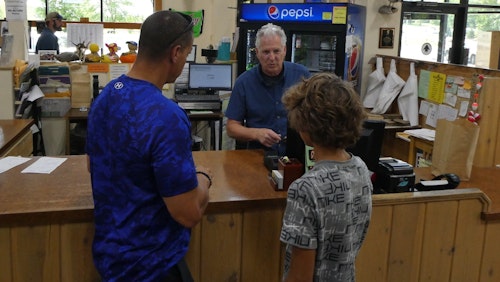
Service Is Still King
J’s Archery in Antigo, Wisconsin, saw its bow sales in 2023 come in a tick slower than during the heat of the pandemic, but like with Minnesota’s Cabin Fever, high-end accessories also moved nicely at J’s in 2023. The dedicated archery pro shop offers eight premium bow lines, and features indoor and TechnoHUNT ranges. It also hangs its hat on superior service that draws customers from a wide area.
“During the pandemic was crazy busy; I knew it had to come to an end sooner or later, and it has slowed down a bit, but it’s still really busy here,” said Bill Rusch, 69, now a part-time worker at J’s, after selling his competing, Antigo-based Bowhunters Limited pro shop to J’s owners Jody and Brian Walbogel back in 2017.
Rusch says premium arrow rests that include models from Hamskea and QAD are moving well at J’s these days, as are top-of-the-line sights from Axcel, Spot-Hogg, HHA Sportsand CBE. And also, small-diameter hunting arrows that include the Victory TKO, Easton FMJ and Axis, and models from Gold Tip, generally the shop’s biggest seller.
J’s Archery bow lines include top sellers Mathews, PSE, Hoyt and Bowtech, as well as Elite, Prime, Darton and Bear. The variety helps spur more sales.
“I think money is a little bit tighter these days for most customers, but they’re never going to give up their hobbies,” Rusch continued. “Here at J’s, we try to stock a lot of higher-end stuff, the higher-end bow accessories, and hunting accessories that include the better hard-shell box blinds complete with floors. Those are $3,000 blinds, and we sell a lot of them.”
And speaking of bow accessories, Rusch says it’s Mathews customers that seem to lead the way in brand loyalty, especially when it comes to that company’s ever-expanding, full slate of high-end accessories that include sights, rests, quivers, stabilizers and more. “Mathews customers want everything on their bow to say ‘Mathews’ on it.”
Despite its shelves stocked with steadily moving products, Rusch believes the success of J’s begins and ends with its top-shelf service that draws people in and makes them loyal customers.
“Back when I had my own shop in Antigo, I did 40 percent of my business from the Wausau area, which is 35 miles away, and at the time it had three pro shops of its own,” Rusch said. “Here at J’s, Brian has the same situation; we do a lot of business from outside the area, and many people are driving a good ways to get here.
“What makes J’s service special? It’s really the little things. Paying attention to detail. Telling people what we’re seeing and how they can improve their rig. We also tune every bow that we put a rest on. And we tell people, after they put 200 shots on it, and break in the string, to bring it back in and we’ll re-tune their bow for free. We check everything over again, make sure all the bolts are rechecked and tight. In the end, the customers are happy. That’s the main thing. Sometimes it’s hard, but that’s the archery business.”
One recent, positive development for J’s has been the addition of a new credit card machine. The benefit comes in the fact that it charges the customer the 3 percent credit card processing fee, rather than that fee falling back to J’s. Although the new machine has been at the shop only a few months, customers, apparently, have not balked at the extra charge.
“Personally, I was really amazed,” Rusch said. “I thought people were going to be really pissed off about it, but I haven’t heard a single word. There’s a sign on our front door that explains all credit card sales will be 3 percent more, and at first, we told everyone about it. But now they don’t even bat an eye. In my opinion, if pro shops don’t have a similar machine they’re missing the boat. I sure wish I’d had it when I had my shop. Depending on your sales, it could be worth up to $20,000 or $30,000 per year or more to a pro shop, which can be critical.”
Photos by Mark Melotik
